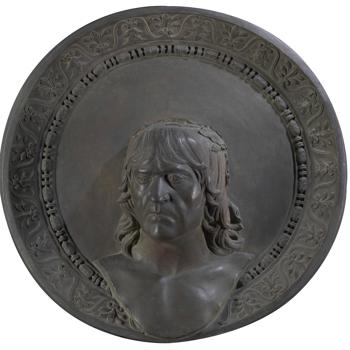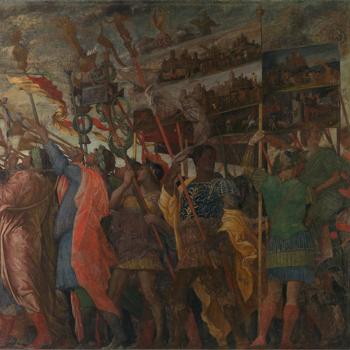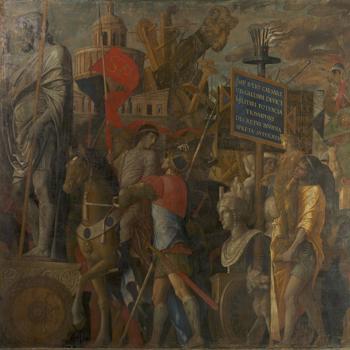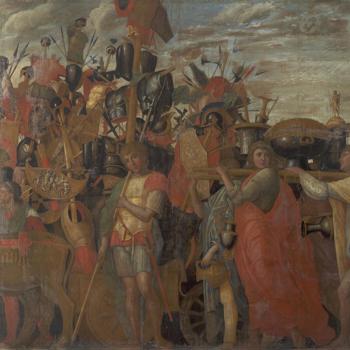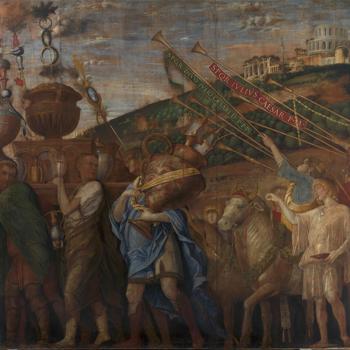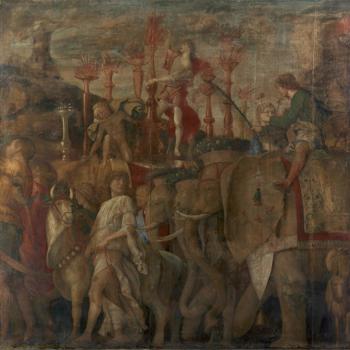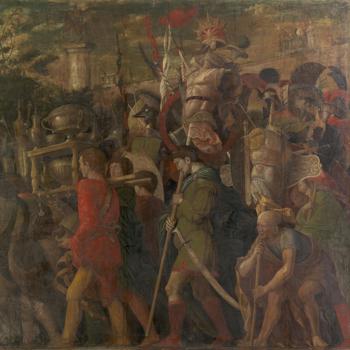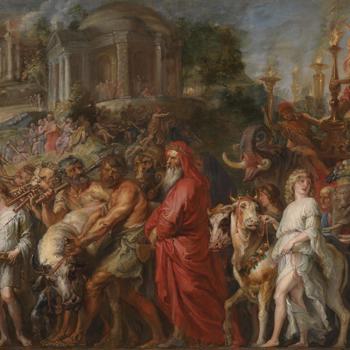These are six of the nine monumental canvases known as 'The Triumphs of Caesar', painted by Andrea Mantegna between the mid-1480s and 1506. They depict a magnificent procession celebrating the victories of the Roman general – and later dictator – Julius Caesar over Gaul between 58 and 50 BC.
Mantegna embarked on this highly ambitious project when he was working as court painter for the ruling Gonzaga family in Mantua. He drew on ancient and contemporary writings for this powerful and sustained evocation of the classical world, as well as the imagery of Roman antiquities, such as friezes and monumental arches.
The 'Triumphs' were acquired by King Charles I of England in 1629, when he purchased many Gonzaga treasures. Considered the jewel in the crown of the king’s paintings, they arrived in England the following year and were hung in Hampton Court Palace.
The 'Triumphs' have since seldom left Hampton Court, but their dedicated gallery is now undergoing refurbishment (completion planned for 2026). Six of the nine are on display in the National Gallery, having been generously loaned by His Majesty the King.
Peter Paul Rubens’s A Roman Triumph, which show a later artistic response to the 'Triumphs' from around the time they arrived in England, also hangs in this room.


